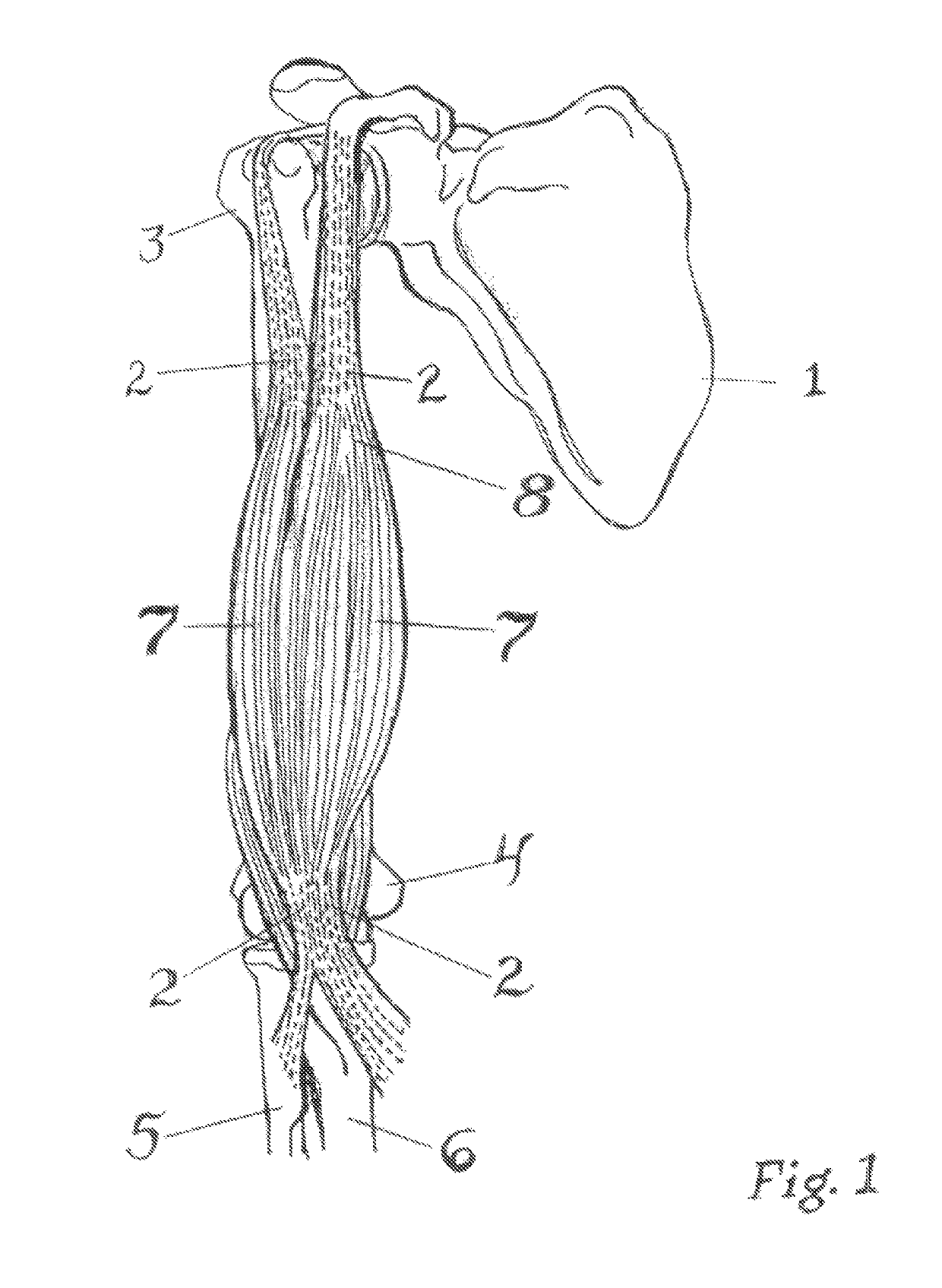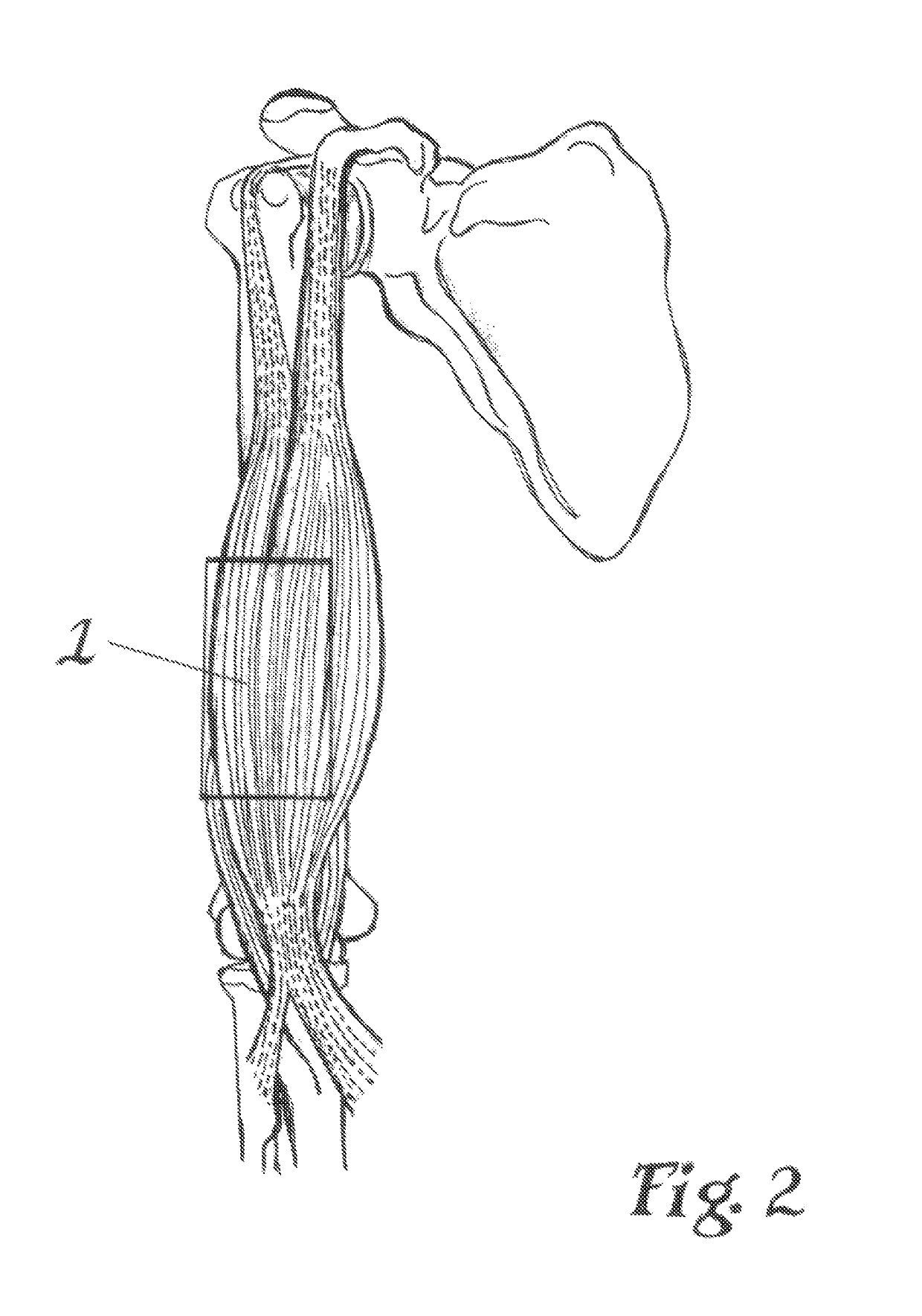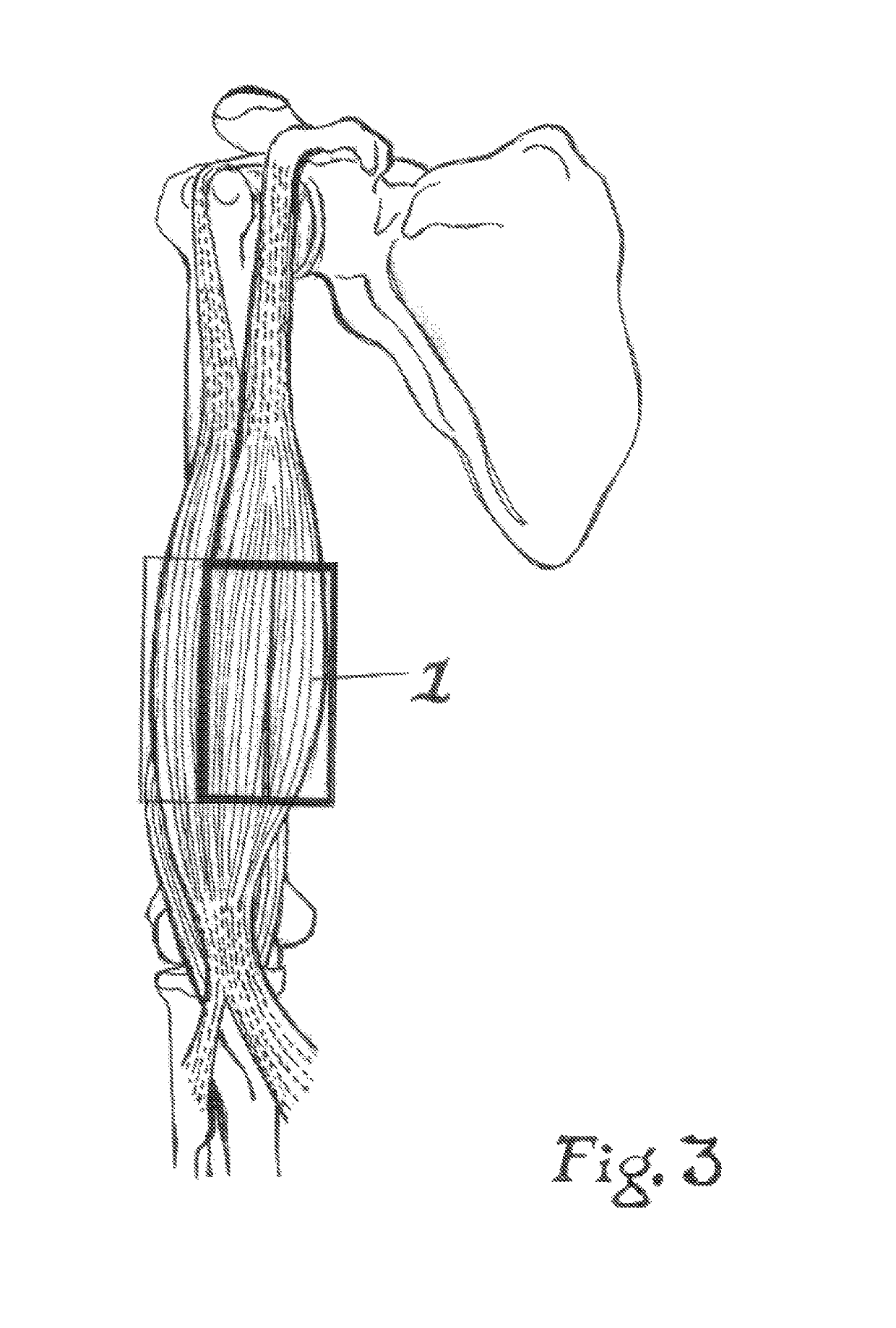Taping method for inhibition of skeletal muscle tone
a skeletal muscle and tone inhibition technology, applied in the field of neuromuscular and orthopedic medicine, can solve the problems of unfounded specific claims that any of these taping processes can assist in either eliciting or inhibiting muscle tone, and none of these taping patterns claiming to assist with muscle tone have produced any effective long-term effects, so as to facilitate the elicitation of muscle contraction, inhibit muscle tone, and inhibit muscle contraction
- Summary
- Abstract
- Description
- Claims
- Application Information
AI Technical Summary
Benefits of technology
Problems solved by technology
Method used
Image
Examples
Embodiment Construction
[0027]The novelty in this invention is specifically the pattern of the taping method. The pattern is very precise in the way the pattern is to activating specific physiological structures. These structures in turn cause the resulting muscle tone changes. The muscle tone changes will be either in inhibition or elicitation of muscle tone.
[0028]Specifically with the inhibition process, the pattern is to place the tape on the human body which in turn causes pressure. Pressure activates the specific physiological structures that directly affect muscle tone. The tape is specifically applied to the specific muscle that you want to inhibit. The tape is applied in parallel to the muscle spindle fibers as well as in the muscle belly of the muscle. Explanation of this specific inhibition pattern is noted as follows. This is specific to the application based on the location and function of the structures affecting the muscle tone. More specifically, this pressure that is caused by the applicati...
PUM
 Login to View More
Login to View More Abstract
Description
Claims
Application Information
 Login to View More
Login to View More - R&D
- Intellectual Property
- Life Sciences
- Materials
- Tech Scout
- Unparalleled Data Quality
- Higher Quality Content
- 60% Fewer Hallucinations
Browse by: Latest US Patents, China's latest patents, Technical Efficacy Thesaurus, Application Domain, Technology Topic, Popular Technical Reports.
© 2025 PatSnap. All rights reserved.Legal|Privacy policy|Modern Slavery Act Transparency Statement|Sitemap|About US| Contact US: help@patsnap.com



